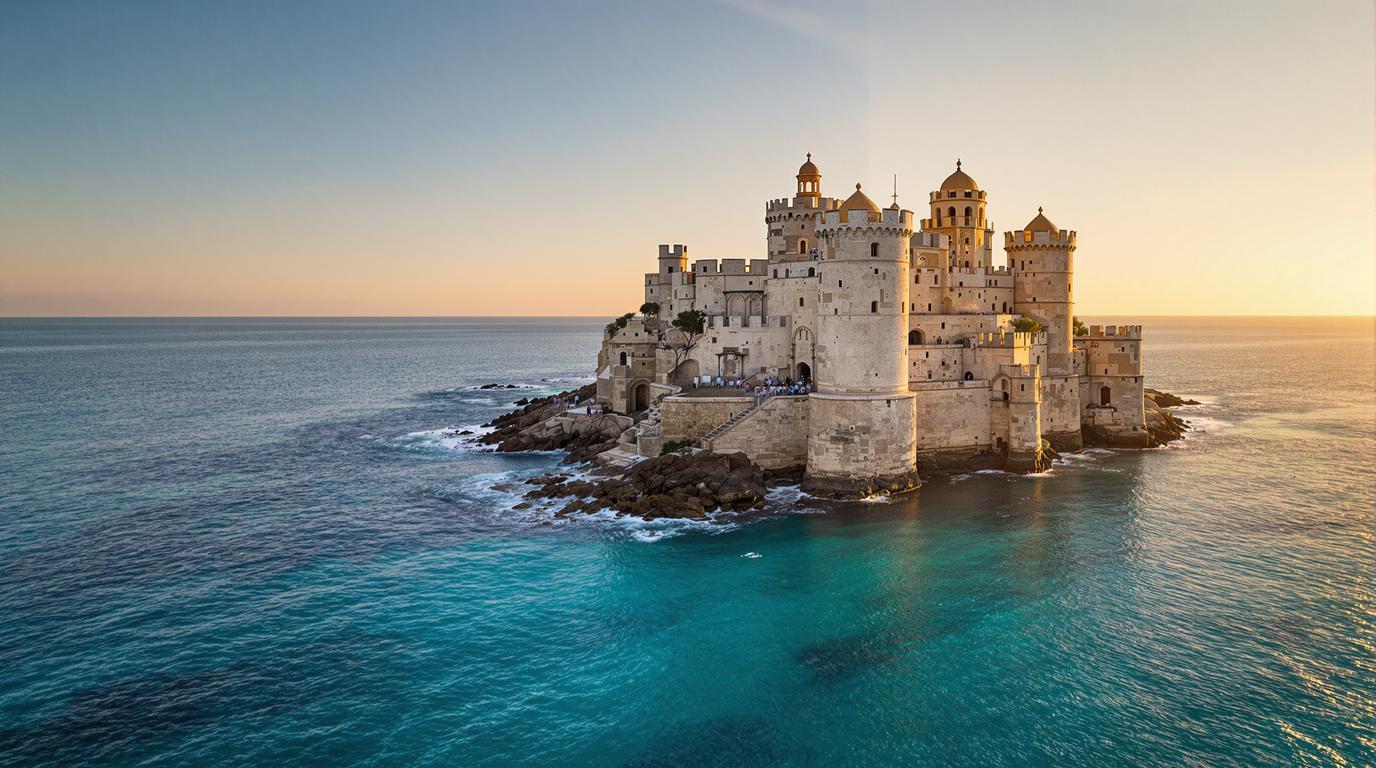The fortress rising from azure waters looks deceptively serene today, but Château d’If harbors dark secrets within its weathered limestone walls. Just a short ferry ride from Marseille’s bustling Old Port, this island prison-fortress captured literary immortality through Alexandre Dumas’ “The Count of Monte Cristo,” yet its actual history proves equally fascinating. Few Mediterranean landmarks blend military precision, political intrigue, and literary fame so perfectly into a single compelling destination.
A royal fortress born of suspicion
King Francis I commissioned Château d’If in 1524 not merely as coastal defense but as a silent reminder of royal authority over newly-acquired Marseille. The rebellious locals immediately nicknamed it “la Malvoisine” (bad neighbor), correctly sensing the fortress represented royal distrust as much as protection. Despite never facing direct attack, its imposing three-tower design and strategic position guarding France’s vital southern port served its purpose beautifully.
Prison cells that inspired literary genius
While Edmond Dantès never actually existed, real prisoners certainly suffered within these walls. By the 1540s, the fortress had transformed into an “occasional prison” where political dissidents, Protestants, and other enemies of the state endured brutal conditions. Most cells offered little beyond stone walls and simple pallets, though wealthier inmates could purchase upgrades—including fireplaces and occasionally servants.
“The history whispers from every wall here. You can almost hear the prisoners’ laments when you stand in the cells,” notes historian Marie Leclerc, who studies Mediterranean prison history.
Escape through literature: Dumas’ enduring legacy
In 1844, Alexandre Dumas forever altered Château d’If’s destiny through his masterpiece portraying Edmond Dantès’ wrongful imprisonment and dramatic escape. Today, visitors can explore a “cell” marked as Dantès’, complete with a tunnel supposedly dug between cells—pure fiction, yet somehow feeling authentic amid the genuine history.
Island views that captivate photographers
Beyond its somber history, Château d’If offers spectacular panoramas across Marseille’s magnificent coastline and the Mediterranean blue. Photographers flock to capture the fortress silhouetted against dawn light or illuminated by golden sunset hues. The island’s rocky terrain and sparse vegetation add to its stark, timeless atmosphere.
Practical magic: Making your visit memorable
Ferries depart regularly from Marseille’s Old Port (around €11 round-trip), though service can halt during rough weather. Consider visiting mid-week to avoid weekend crowds, and bring water plus sun protection—the island offers little natural shade. Allow 2-3 hours to fully explore the fortress, including exhibition spaces detailing both factual history and literary connections.
“Visitors often come for Dumas but leave fascinated by the real stories,” explains Pierre Daumas, a veteran guide at the fortress. “The line between fact and fiction blurs beautifully here.”
Hidden corners few visitors discover
While most tourists focus on the prison cells and central courtyard, the fortress holds lesser-known treasures worth discovering. The upper ramparts provide stunning 360-degree views, while the artillery platforms demonstrate remarkable engineering. The small chapel and former barracks areas offer quieter moments for contemplation away from crowds.
A nature sanctuary with unexpected wildlife
Surprisingly, this stark fortress island serves as habitat for various seabirds and Mediterranean plants that thrive in the salt-sprayed environment. Spring visitors might spot wildflowers pushing through rock crevices, while migratory birds occasionally rest here during seasonal journeys across the Mediterranean.
Beyond Château d’If: Complete your adventure
Consider combining your visit with exploration of Marseille’s historic quarter or the nearby Frioul archipelago. The Old Port offers seafood restaurants serving bouillabaisse (Marseille’s famous fish stew), while Notre-Dame de la Garde basilica provides another spectacular viewpoint overlooking the bay, fortress, and city.
Standing on Château d’If’s weathered ramparts, watching boats pass where desperate prisoners once gazed in hopeless longing, creates a poignant connection across centuries. This small fortress-island embodies the perfect blend of authentic history and literary imagination—a physical reminder that sometimes truth and fiction together tell the most compelling stories of all.
